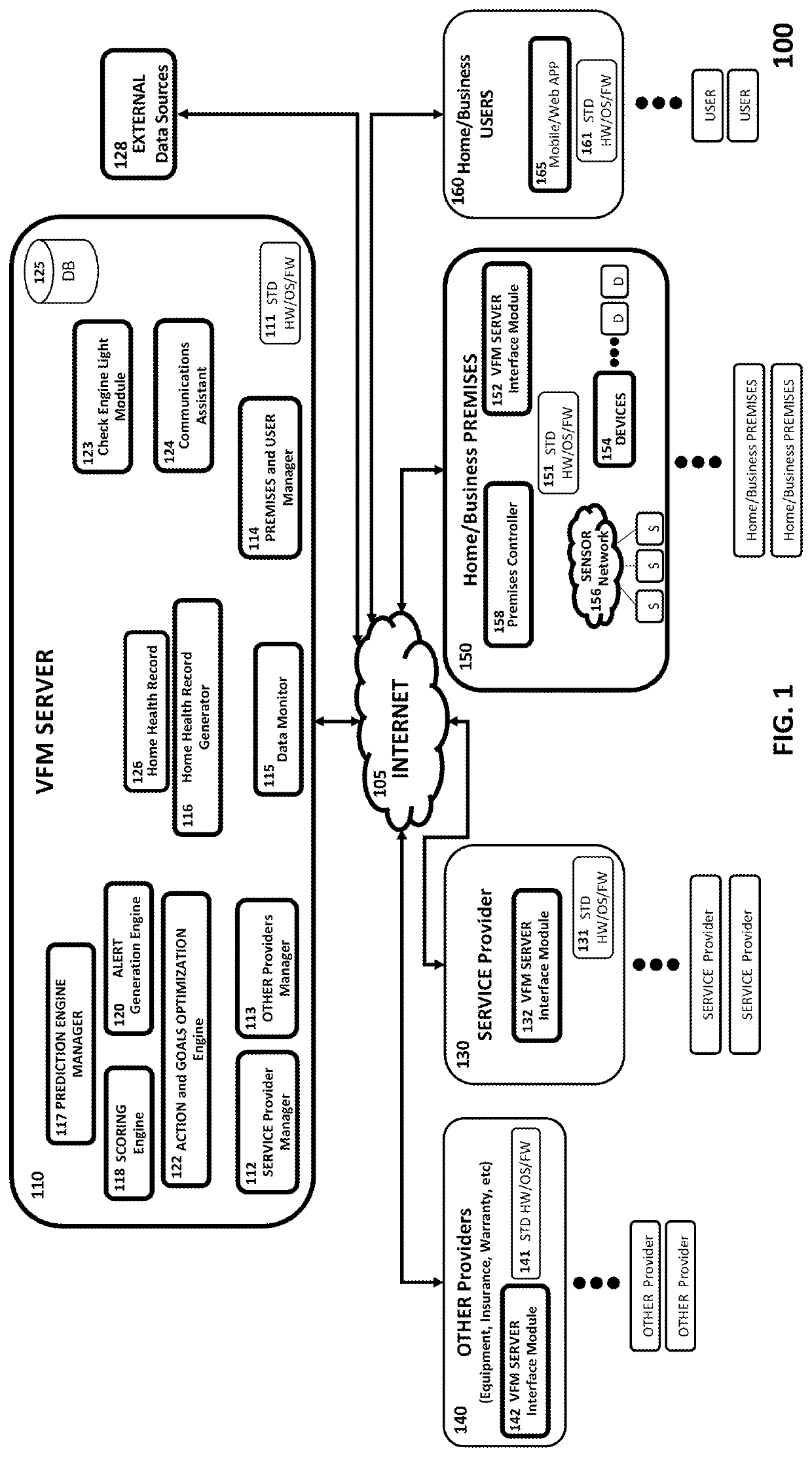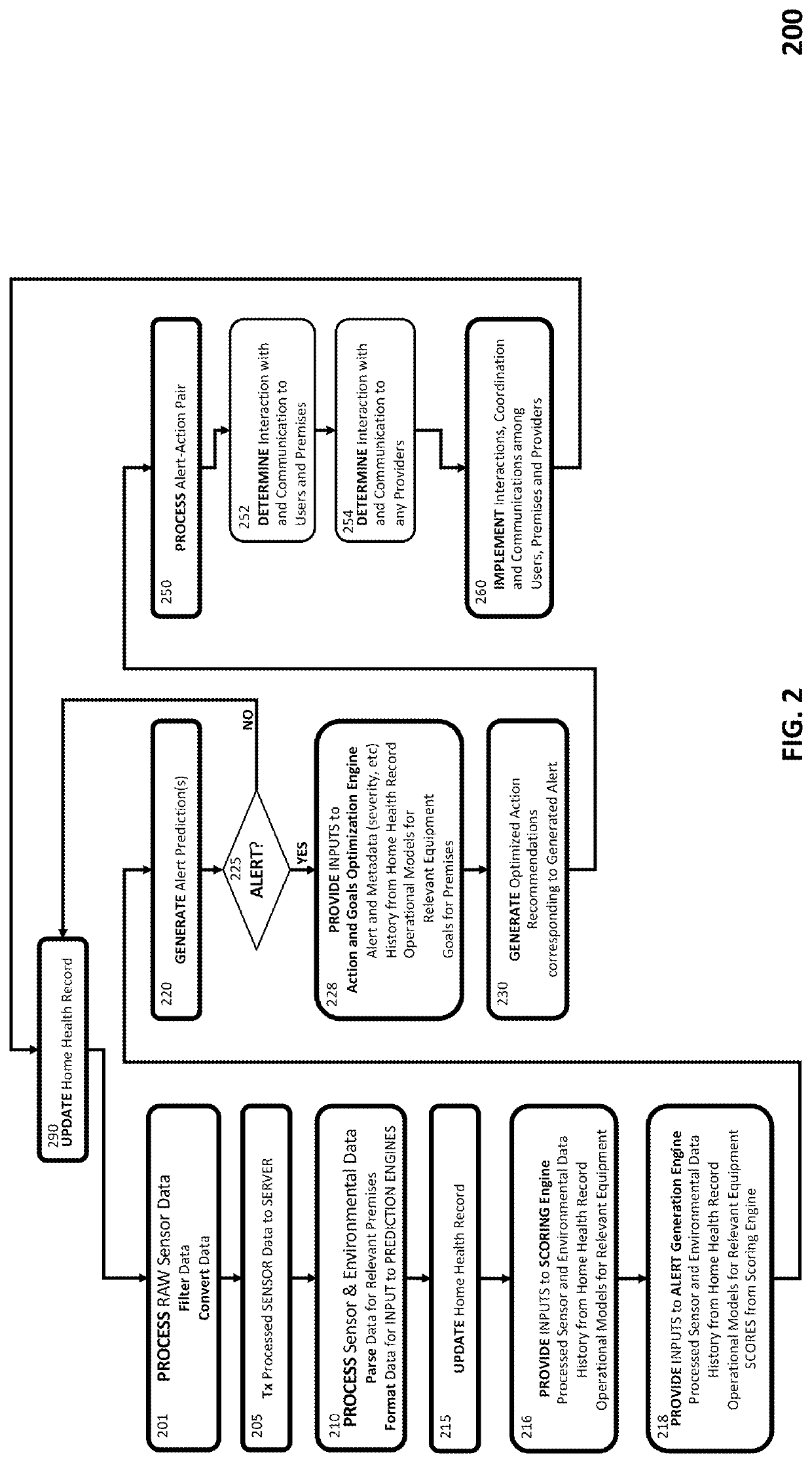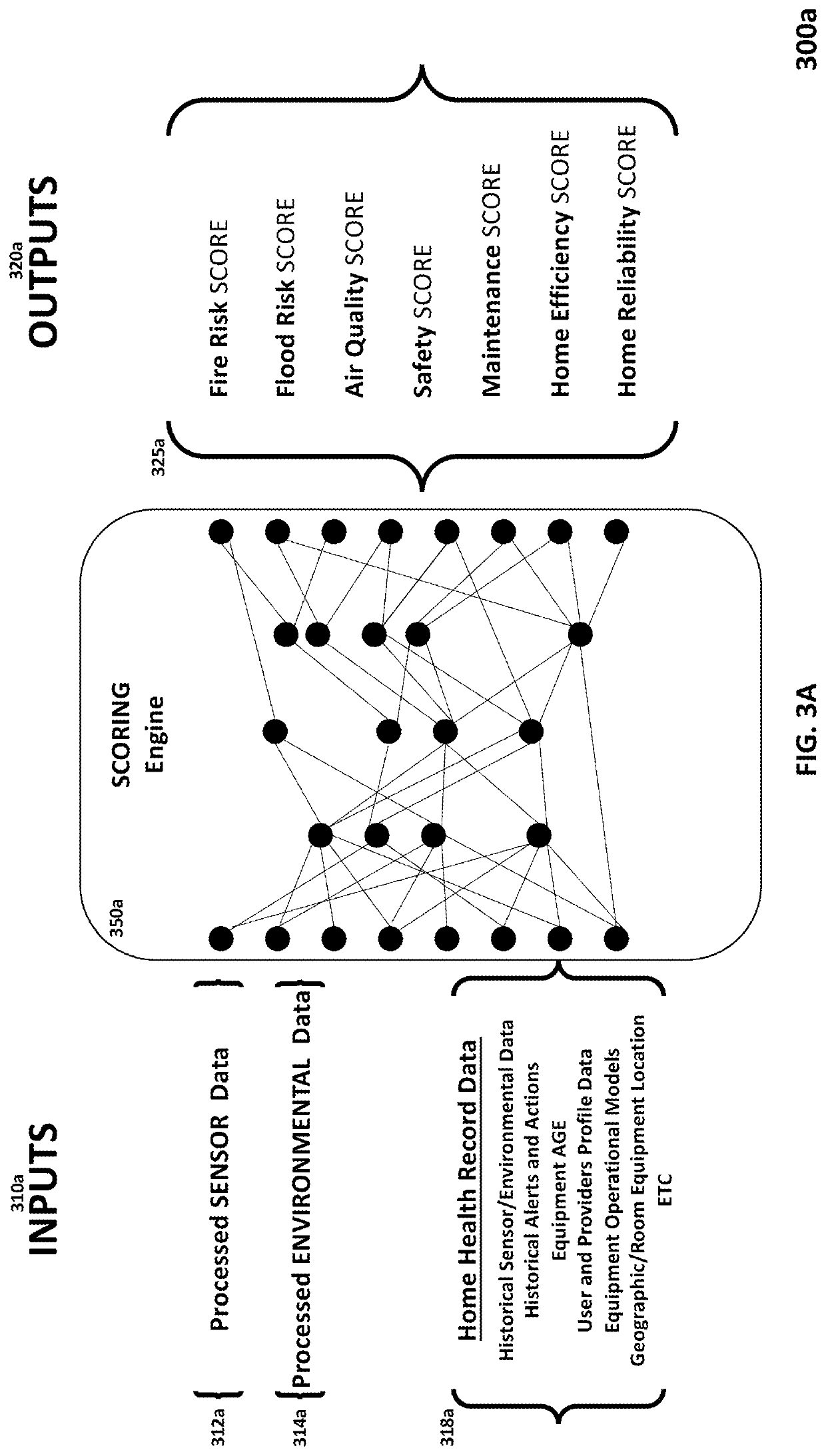The long-term maintenance of equipment and other infrastructure on the premises of virtually any home or business is a well-known problem that has received relatively little attention over the years.
But such concepts are rarely if ever monitored and optimized as conditions change over time after the buildings are occupied.
Moreover, while one can quantify such concepts with respect to individual equipment, it is much more difficult to do so at a more systemic level involving equipment systems or an entire household or neighborhood.
Homeowners often are unaware of problems before conspicuous symptoms arise, are uncertain of which provider can best address such symptoms, and are hesitant to incur the expense of calling service technicians unless and until significant problems are evident.
Moreover, homeowners often do not maintain such equipment as frequently as recommended.
When they do eventually call service technicians, problems are often more severe and require relatively expensive repairs.
As a result of such “reactive” maintenance, the life of such equipment is often shorter, while its
cost of ownership is higher and its operation over time is less efficient than if such equipment had been maintained in a proactive and more effective manner.
For example, particular equipment may be in need of “repair” because one or more of its components are broken and need to be fixed.
Or the “
operational performance” of particular equipment may fail to satisfy a homeowner's desired level of efficiency or comfort, or may simply be suboptimal, potentially indicating an emerging risk.
Moreover, any of these and other related types of problems may be systemic in that they are not isolated to a single piece of equipment, and may involve systems of equipment or even whole-home or multi-home issues.
The interdependence among the equipment and infrastructure of a home only exacerbates the difficulty of
troubleshooting certain problems.
Such systemic problems may require systemic solutions, such as adding, upgrading or replacing particular equipment, modifying device settings or otherwise altering a home's infrastructure.
But, not unlike the satirical “dental monitor” television commercials in which a patient is diagnosed with a dental problem (e.g., a cavity) yet is sent home without the problem being fixed, these systems offer little in the way of resolving abnormal conditions beyond providing an alert or notification of the condition.
As a result, they will still likely adopt a “reactive” approach, whether they frequently call service technicians or procrastinate due to cost concerns.
While allowing for
user input and goal-based device control is beneficial, it does not address the problem of detecting abnormal conditions (as opposed to detecting conditions that merely satisfy a predefined user policy).
Even more importantly, it does not address the difficult task of iteratively troubleshooting and addressing such abnormal conditions over time.
In other words, the Google
system does not suggest how it could detect an abnormal condition such as a faulty component of an
HVAC system or
pool pump, much less how it would troubleshoot such a problem.
While the inclusion of such additional recommendations is useful, this
system still falls far short of providing actions that are tantamount to the iterative series of steps that users and service providers would perform over time to troubleshoot and address underlying problems, as opposed to the symptoms corresponding to the alert.
Moreover, the Powerhouse Dynamics system is limited not only to monitoring electrical consumption, but to monitoring the performance characteristics of an individual appliance (as opposed to taking a systemic approach to detecting and resolving abnormal conditions).
In other words, it fails to obtain (and therefore cannot utilize in its recommendations) a “
contextual awareness” of the home's operation over time.
As alluded to above, abnormal conditions cover a wide
gamut of potential problems, many of which are extremely difficult to troubleshoot, even for a professional
service provider.
Moreover, it is inefficient for homeowners to choose between calling a service
technician whenever the slightest symptom appears (assuming the homeowner is even aware of who to call), or to wait until severe symptoms arise.
Many
complex problems require that steps be taken over time, with subsequent steps dependent on the results of prior ones, as well as on changes that may only be reflected by monitoring sensor-based and
environmental data.
Such an ideal “virtual facilities manager” would detect, anticipate and address all such problems in a systemic manner that aligns the goals of homeowners and various service and other providers, and thus reveals the many shortcomings in these existing systems, including additional cost due to a reactive maintenance approach, lower efficiency of equipment operation over time and an inability to detect and resolve systemic problems affecting multiple items of equipment and infrastructure, among others.
Certain problems involve a
single item of equipment, while others are systemic in nature.
Whether systemic or otherwise, some problems reflect broken components in need of repair, while others reflect preemptive maintenance issues designed to maintain “healthy” and reliable operation to avoid future repairs, and still others reflect suboptimal operation of the home and its component systems over time (such as a gradual decrease in systemic energy efficiency, not easily remedied, for example, by the replacement or
upgrade of one item of equipment).
In many cases, such participation may
delay or even prevent service calls that might otherwise have been inevitable.
 Login to View More
Login to View More  Login to View More
Login to View More 


